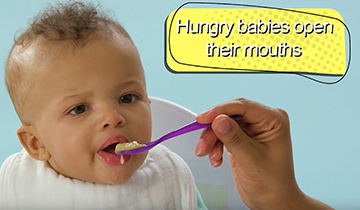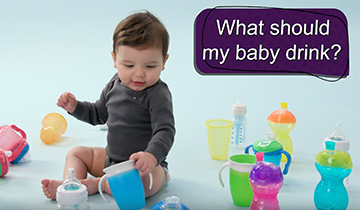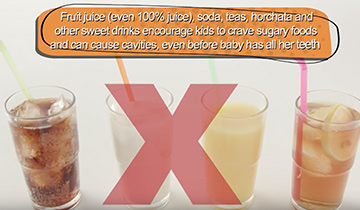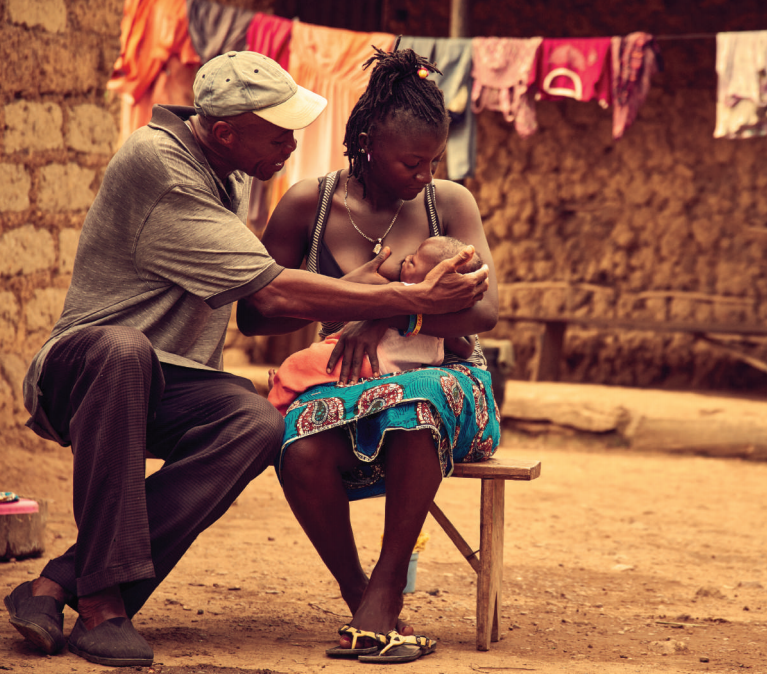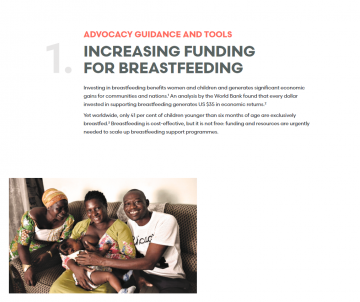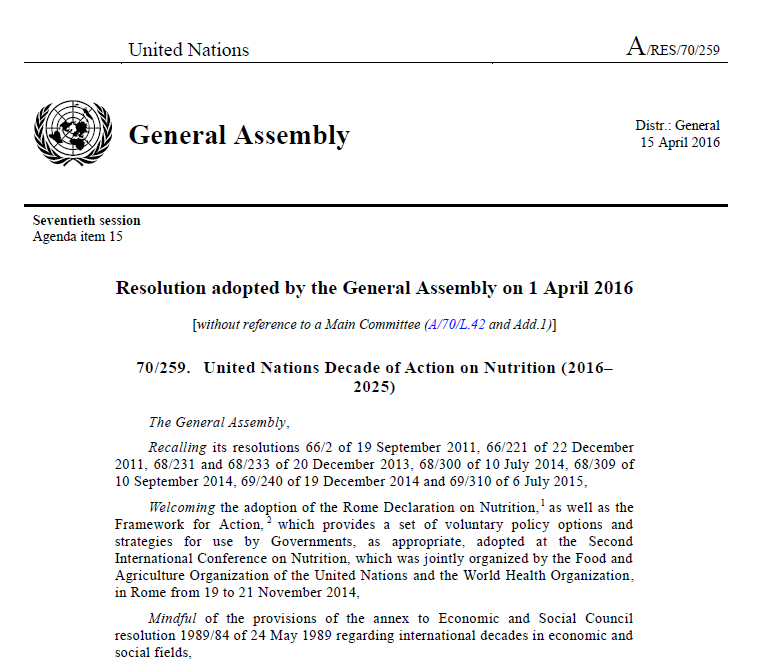How much should I feed my baby?
Wondering how much to feed your baby? Here’s a tip: Learn to read his or her hunger and fullness cues and you’ll always know when and how much to feed your baby.
Babies will let you know if they are hungry or full, but you have to watch for the signs. There are lots of ways your baby might tell you what he or she needs.
Your baby may be hungry if he or she:
- Reaches for or points to food
- Opens his or her mouth when offered a spoon or food
- Gets excited when he or she sees food
- Uses hand motions or sounds when offered food
… and if no one listens to these cues, then your hungry baby may get “HANGRY”!
Your baby may be full if he or she:
- Closes his or her mouth when food is offered
- Turns his or her head away from food
- Pushes food away or shakes his or her head “no”
When it comes to feeding – whether it’s breast milk, infant formula or food – let your baby decide how much he or she wants at that time. Your baby does not need to finish a bottle or all of the food on the plate. Food is not a good reward or punishment.
And remember, talk to your child’s pediatrician or health care provider about any questions or concerns.
To learn more, check out these additional resources related to this topic:
- More bite-sized videos about introducing first foods – 1,000 Days
- Signs Your Child is Hungry or Full – Centers for Disease Control and Prevention (CDC)
- Is your baby hungry or full? Responsive feeding explained. – American Academy of Pediatrics’ Healthy Children
- Sample Meal Patterns and Portion Size – United States Department of Agriculture

